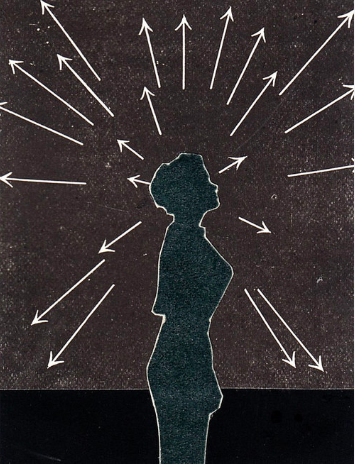13 Essential Behavioural Insights for Changemakers
We know we should eat healthily, exercise more, recycle, stop littering, donate blood, and reduce our water use. So why don’t we just do everything right? Well, humans are not always rational, and behaviour change can be hard.
Behavioural Insights (BI) offers a set of proven methods that can be used. The field combines elements of psychology, cognitive science and social science to understand how people actually make decisions.
For policy makers in government this is especially important, because the daily choices people make in their lives - from whether to use condoms, to what public transport to use - can have massive implications when multiplied by millions of citizens. The Cape Town water crisis of 2018 is a case in point.
This is why the OECD and the Western Cape Government are organising the Behavioural Insights Conference in Cape Town on the 27th and 28th September 2018: @BI4Gov. The Conference is bringing together BI authorities from all over the world to discuss how to apply the science of human behaviour and decision-making to public policy.
These principles of BI are fascinating and apply to all of our lives and decisions. This article provides an overview of 13 proven principles that can be used to nudge our choices and actions.
13 essential Behavioural Insights terms:
1. Anchoring:
The act of anchoring thoughts or decisions on the first piece of information we receive about a topic - whether or not it’s relevant or the best information. If you’re asked to guess the price of something and have recently answered an arbitrary question with a number (such as: how old are you?), your answer is more likely to be anchored to that number. Our decisions are anchored by mental reference points, whether or not they apply.
2. Availability Heuristic:
The availability heuristic speaks to the way we make decisions based on how easily we can access information about the topic. We judge something as more likely to happen if we can easily recall an incident or example of it happening before - even though our availability is largely influenced by what the media chooses to focus on. A common example of the availability heuristic is the question: What do more people die of, shark attacks or being hit on the head with a coconut? About 80% of people say that shark attacks cause more deaths, but that’s not true. There are far more coconuts falling from trees than fatal shark attacks, yet shark attacks are usually scary and gory, so they get all the media attention. As a result, they are more available to us and we can remember them more quickly.
3. Behavioural Bias:
Behavioural Biases are a group of behaviours (including Anchoring, Commitment, Confirmation Bias, Decision Fatigue, Framing, Loss Aversion, Optimism Bias and Priming) that cause us to act in an irrational way and make bad decisions; without being aware that we’re acting because of a bias. They are also sometimes called Cognitive Biases.
4. Confirmation Bias:
Confirmation Bias is when we seek out opinions and information that confirm our existing preconceptions and thinking. It is reassuring to believe that we have made the right decisions, so even when potentially looking for alternatives, we are often motivated to find confirmation of our current choices.
5. Commitment:
We see the effect of commitment when people publicly commit themselves to something - an idea, a person, a cause - and then feel obligated to follow through. Commitment is also seen when people are involved in creating things themselves, and feel more strongly about that thing. IKEA plays strongly on this idea: people are disproportionately attached to their IKEA furniture because they had to put it together themselves. The IKEA Effect studied how much more people were willing to pay for a simple IKEA storage box when they had put it together themselves. The result? Significantly more. Commitments have been shown to be most effective when there is a great cost to breaking them, as in a penalty to pay if you withdraw an investment early.
6. Decision Fatigue:
Making decisions is an exhausting activity, and when we are required to make numerous decisions in a day, we often suffer from Decision Fatigue - which leads to making poor decisions. Studies have shown that judges are more lenient when they’ve just had a snack break or lunch, which is an example of decision fatigue.
7. Framing:
Framing speaks to the way we make decisions based on how the information is presented - how it is framed. Choices can highlight one of two sides to any product or situation: the positive or the negative. Describing a cut of meat as 95% lean is far more appealing than describing it as 5% fat. Similarly, ‘virtually sugar-free’ sounds much healthier than 7% pure sugar.
8. Heuristic:
Heuristics are a set of cognitive shortcuts that make decision-making easier. You can think of them as rules or shortcuts that help to reduce our mental load, but they aren’t always perfect. There are a number of common heuristics (like the Availability Heuristic). An example of a heuristic is substituting an easier question for a hard one. So instead of answering the question, “Should I invest in this company?” we swap it out to, “Do I like this company?”
9. Loss Aversion:
It is twice as painful to lose something as it is to gain something (even if that ‘something’ is of the same value). So we are far more motivated to avoid losses than to seek out gains. If a friend offered you a coin toss where you had to give her R100 if it landed on heads and she would give you R100 if it landed on tails, would you take that gamble? Most of us wouldn’t - we would require the winning amount to be twice as much as the amount we might lose. Losses have a larger psychological impact on us than gains.
10. Nudging:
Perhaps the most famous term in BI, nudging, refers to a subtle intervention that suggests people act in a certain way while still allowing them free will. A nudge alters our behaviour in a predictable way without forbidding any specific actions. If you think about the way a GPS guides you to your destination, that’s nudging.
11. Optimism Bias:
We have a tendency to overestimate the likelihood of positive things happening to us, and underestimate the likelihood of negative events happening to us - this is optimism bias. We don’t think it’s likely that we’ll get in a car accident, relative to other people. Yet the other people also don’t think it’s likely that they’ll get in a car accident.
12. Priming:
Priming refers to subconscious cues that can affect our behaviour and actions. Priming activates linked memories, associations and stereotypes that are subconscious. Studies have been done that show that simply reading words associated with old age - lonely, grey, wrinkled - (interspersed with other words so it’s not a conscious association) make us walk more slowly.
13. Social Norms:
We are heavily influenced by what the people around us are doing - by what the societal norms are. This affects both our behaviour and our decisions, and can be seen as behavioural expectations or rules within a group of people. This is often used in behaviour change by highlighting individual consumption (for example, water use) in comparison to the average in your neighbourhood or city.
Now that you’re clued up, head over to the BI4Gov website and register for South Africa’s first Behavioural Insights conference. Registration is free for approved delegates - it’s sure to be 95% interesting (and that’s not framing).
All images by Recombiner















